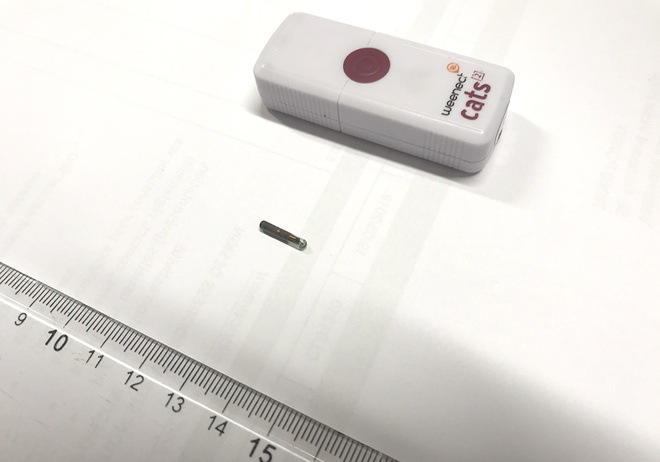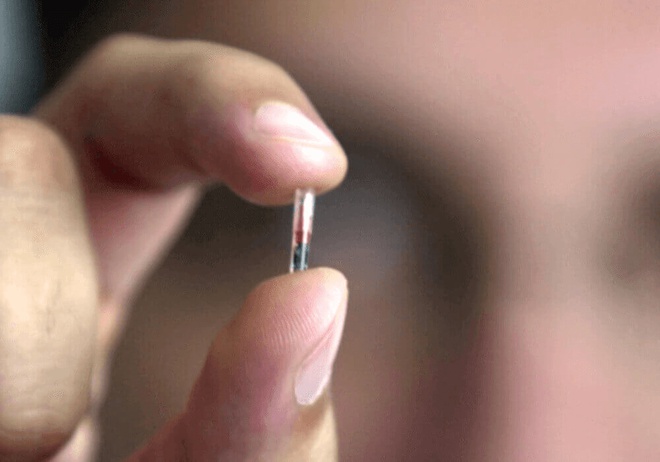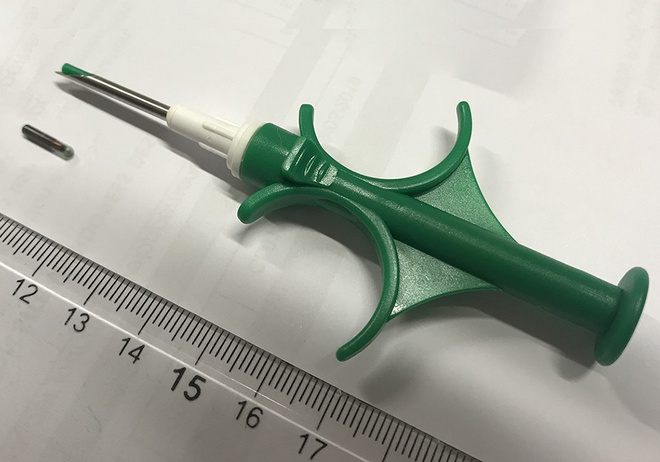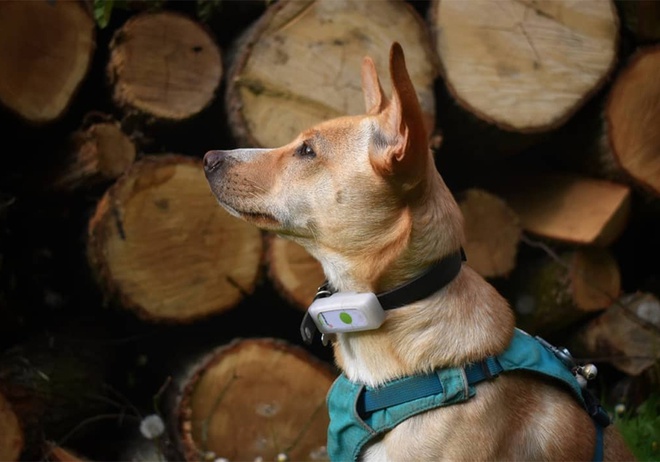Implant or GPS chip for cats and dogs, how to choose?
Worried about losing your dog or cat? Here's everything you need to know to choose the right tracking system for your pet. We'll also explain the main differences between a GPS chip and a microchip.

Reading time : 10 min
Has your dog disappeared or run away during the walk to catch a tempting smell? Your cat went out but didn't come back as planned? No worries, all you need to do is activate its GPS chip implant for dogs or its micro GPS chip for cats to geolocate it and find it back quickly and easily.
Sounds like an ideal scenario, doesn't it? Ideal yes, but for the moment it's mostly fictional! Because in reality, the subcutaneous GPS chip is still only a myth, an invention that is only just at the idea stage. Neither the cat GPS chip implant nor the subcutaneous GPS chip for dogs exists for the simple reason that the GPS chip implant technology is not perfect yet. As a result, there are many challenges in terms of feasibility.
However, there are two alternatives to this dream product: the electronic microchip and the GPS chip for cats and dogs. After explaining why the GPS implant is not possible, we will detail how the electronic microchip and the GPS chip can prevent you from being separated from your pet as well as their main differences.
Summary of the article:
TOPICS
The myth of the GPS chip implant for cats and dogs

The chances are that if this had been possible, the GPS chip implant would already be telling us the real-time location of our loved ones. However, even though man's mastery of miniaturisation is getting better and better, there are still some constraints that are difficult to overcome.
The microchip is not a subcutaneous GPS chip
Today, the microchip is in no way capable of providing location information. To understand the difference between an identification microchip and a GPS chip, you need to picture the following.
The electronic identification chip is similar to opening a drawer to read information. When lost dogs and cats are found, they are taken to a vet or the local animal shelter. Veterinarians and professionals in the pet industry are the only people with access to pet-related information. Equipped with a microchip reader, they can read the animal's identification number that will enable them to access information about the animal.
As for the GPS chip, it's a bit like phoning a third party to tell them exactly where you are. A telephone conversation involves a transmitter and a receiver that communicate live; it's much the same principle for GPS technology. The only way to track the animal's movements is if the GPS chip sends live information about its GPS position to a receiver, such as your telephone.
However, the microchip is not a transmitter. It is just a medium containing information readable at close range with a chip reader.
Difficulties linked to miniaturisation
Even if the progress in terms of miniaturisation for the RFID chip is significant, we can't say the same for the GPS chip. Indeed, how can we envision incorporating a GPS antenna, a GPS unit, a SIM card and a GSM unit into a chip the size of a grain of rice?
Not to mention the fact that it must include a battery as well. However, the battery's life is proportional to its size plus it is impossible to go below a specific dimension (because from a given battery size the GPS chip would only have a few hours of life). That limits its use because of the constraint of having to recharge it two or three times a day. Therefore, it is a big challenge to solve.
Unsolvable power supply problems
Assuming that GPS technology can integrate into a subcutaneous implant, there is still a significant difficulty. How to power the subcutaneous GPS chip? As we have seen, a battery has to power the GPS chip and must recharge regularly. However, a cat GPS chip under the skin is difficult to reach, so how do you attain it to feed it?
Moreover, if the battery life lasts for about five years, this means that it must be replaced at least once in the animal's life. However, in this specific case, changing the battery would imply a new operation for the animal and additional costs for its owner.
How the microchip works

Microchip technology
The microchip used to identify pets is the size of a grain of rice. This subcutaneous implant, introduced using an injection needle, contains a microcircuit.
The microchip usually uses Radio Frequency Identification (RFID) technology. That is precisely the same process used for contactless payment or public transport tickets. The pet's identification number contained in the microchip is readable by a chip reader and gives access to information specific to the pet.
The price of the identification depends to a large extent on your veterinarian, who sets his fee schedule more or less independently. You have to find out beforehand to ensure that the price charged is in line with your resources (but bear in mind that this act remains compulsory in any case in the eyes of the law).
What is the purpose of the microchip?
The microchip is used primarily for the registration of pets and health monitoring mandated by the British government, but also offers valuable help in the search for lost or missing animals. Far from being a constraint, the microchip makes it possible to tackle the disappearance, theft and even trafficking of animals. It is the identification card (or ID card) of the dog or cat.
How is the microchip used?
How can you find your cat thanks to a microchip? In the event of loss, in addition to the various steps taken to find it, an owner can inform its microchip database operator by communicating its identification number.
At the same time, when a pet is found, the microchip containing the identification number is immediately scanned to obtain the information necessary to find its owner. This information will enable the pet's owner to be contacted and informed that the pet has been found.
The microchip gives the owner about 40% more chances of finding his lost pet. That is why it is essential to remember to update details when the owner of a dog or cat changes.
Things to check before buying a GPS
18 questions you need to ask yourself before buying a GPS tracker for your loved ones!
How the GPS chip for cats and dogs works

What is a GPS chip?
The GPS chip for dogs and cats is a tracking system. It is a device that transmits geolocation information to a receiver, such as a smartphone, through a mobile application. Note that the interval at which the GPS coordinates refresh depends on the chosen model (you may as well have a new position every 10 seconds as every 10 minutes).
This device requires the presence of a battery which must recharge regularly. Also, the battery has a defined lifetime, which means that it needs to get changed about every five years. Besides, GPS chips often integrate a SIM card (to be able to transmit the GPS position of the tracking device).
A GPS chip designed and suited to pets
There are many GPS intended for different services, with or without a monthly subscription, for example, and in various formats. Nevertheless, the GPS chip usually fits into a box no larger than a small matchbox. Relatively light, this box is equally suitable for cats and dogs. Attached to a collar (with a breakaway mechanism for cats) or harness, it is usually waterproof (IP67 waterproof), allowing it to follow the pet wherever it goes.
The GPS chip is just as efficient for a large dog as it is for a small dog or cat. For a smaller cat or kitten, it will depend on each animal, but the main thing is to get the cat used to wearing the collar or harness before equipping it with a real-time tracking device.
How does a dog GPS chip work?
A dog is a domestic animal that usually does not go out without its master. However, some dogs are not very obedient and wander away quickly. Other dogs even run away frequently. A shy dog may run away if it is frightened. The GPS chip for dogs will best serve to find them using its real-time geolocation feature with no distance limit. Thanks to the map, compass and radar functions, locating your dog during walks is child's play when it wears its dog GPS chip.
Why should you get a cat GPS chip?
Cats are more independent than dogs. It is cuddly inside the house but becomes solitary when it goes through the door to explore its territory. It is always interesting for a master to see the extent of his cat's travels. Nevertheless, the cat GPS chip is far from being a gadget and allows owners to know where their cat is at all times.
Considering that in the United Kingdom, a cat disappears every 10 minutes, the cat GPS chip is not an extra accessory. The features of the cat GPS chip are the same as those of the dog GPS chip, and when it takes a long time to return home, it is entirely possible to track down your cat thanks to its cat GPS chip and to go and look for it quickly to keep it safe.
Other features of a GPS chip
It is difficult to give an opinion on the best GPS on the market, that depends on what everyone expects from their pet GPS tracker. Nevertheless, apart from essentials aspects such as accuracy of localisation, some GPSs are much more than just a tracking system. The distance travelled, the average speed of the animal, the location history and even the activity tracking are all useful data for owners to get to know their pet better.
Some GPS chips even allow you to set up delimited zones (or virtual fences), the perimeter of a garden, for example. When the cat or dog enters or leaves a security zone, the owner receives alerts on his smartphone (notifications through the free iOS or Android application). This anti-runaway feature is very convenient to react quickly when a dog digs under the fence to run away.
Thanks to the GSM antennas, the GPS chips with subscription benefit from a network coverage nearing 100% of the territory. That allows tracking the pet in real-time and without any distance limit. It is thus possible to get a precise GPS position even in the forest or in the countryside.
Finally, to help your comparison analysis, you may be interested in the training feature, based on positive feedback, which is also greatly valued by pet owners. To train a dog or cat, ring or vibrate its GPS chip every time it eats to provoke a pattern. Over time, the animal will associate the vibration or ringing of its GPS chip with the food in its bowl. If a dog escapes during walks or if a cat is late returning home, activating its GPS chip will naturally lead it to return home to enjoy its food.
The importance of battery life
As we have seen above, battery life depends directly on its size. It is, therefore, a real constraint in the pursuit of miniaturisation of GPS systems. The value and usefulness of a GPS chip depend on the battery's life. While the GPS chip needs to recharge regularly, the battery must last long enough to give owners time to find their pet if it runs away.
The microchip and the GPS chip: two complementary technologies

The myth of the subcutaneous GPS chip is persistent. It has been given different names: the geolocation chip for cats, the electronic chip for dogs, the GPS implant for cats, the geolocation chip for dogs... But whatever the names given to it, the GPS chip implanted under the skin is a fantasy.
Today, only the electronic identification chip exists in the form of a subcutaneous implant. However, it isn't redundant to couple the electronic identification of the pet with the GPS chip. On the contrary, these two solutions complement each other to provide safety to the animal and peace of mind to its master.
The microchip or "how to find your lost pet?"
It is mandatory to microchip cats and dogs in the UK. Each animal must be fitted with a microchip that contains a unique number. Pet's information has to be associated with this unique number. That first step helps to keep the pet safe since the electronic chip increases the chances of finding a lost cat or dog.
A pet cat or dog does not necessarily have a collar or tag indicating its owner's contact information. However, when a lost pet is found, the priority is to find its owner. In this case, the identification number is the best alternative to hope to find the owner.
The GPS chip or "how to stop losing your dog or cat?"
But even better than finding your pet is not to lose it again. The GPS chip helps prevent pets from running away or getting lost. Some dog breeds are known to run away frequently. Similarly, some cat breeds are known to be independent and go out regularly. When the four-legged companion has an annoying tendency to run away, the GPS chip is an efficient tool.
Indeed, it is not easy to know how to find a dog or cat without knowing where it has gone. It's like looking for a needle in a haystack. The GPS chip indicates the pet's exact position in real-time and without distance limits. All the owner has to do is follow the instructions on his or her phone to reach the pet and bring it back to a safe place.
Conclusion
The subcutaneous GPS chip for cats or dogs would undoubtedly benefit us, but it just doesn't happen to exist yet. Nevertheless, the microchip and the GPS chip are two tools with different but complementary technologies.
One contains readable information, while the other transmits tracking data to a receiver. Undoubtedly, the microchip and the GPS chip together represent significant help to avoid to lose our pets or to find them quickly if necessary. The dog and cat GPS collar is also a quick and effective solution for tracking your pet, recalling it if it wanders away and finding it if it runs off.
Continue reading our guide
This article is part of a complete guide on the subject. Do not miss the next chapters.
Are you looking for the best GPS tracker ?
18 questions you need to ask yourself before buying a GPS tracker


